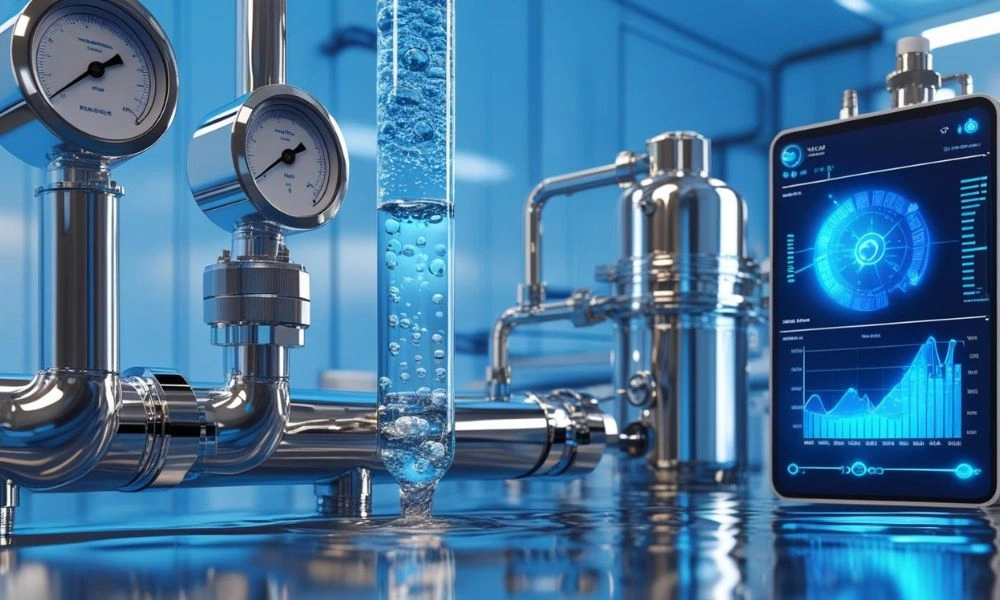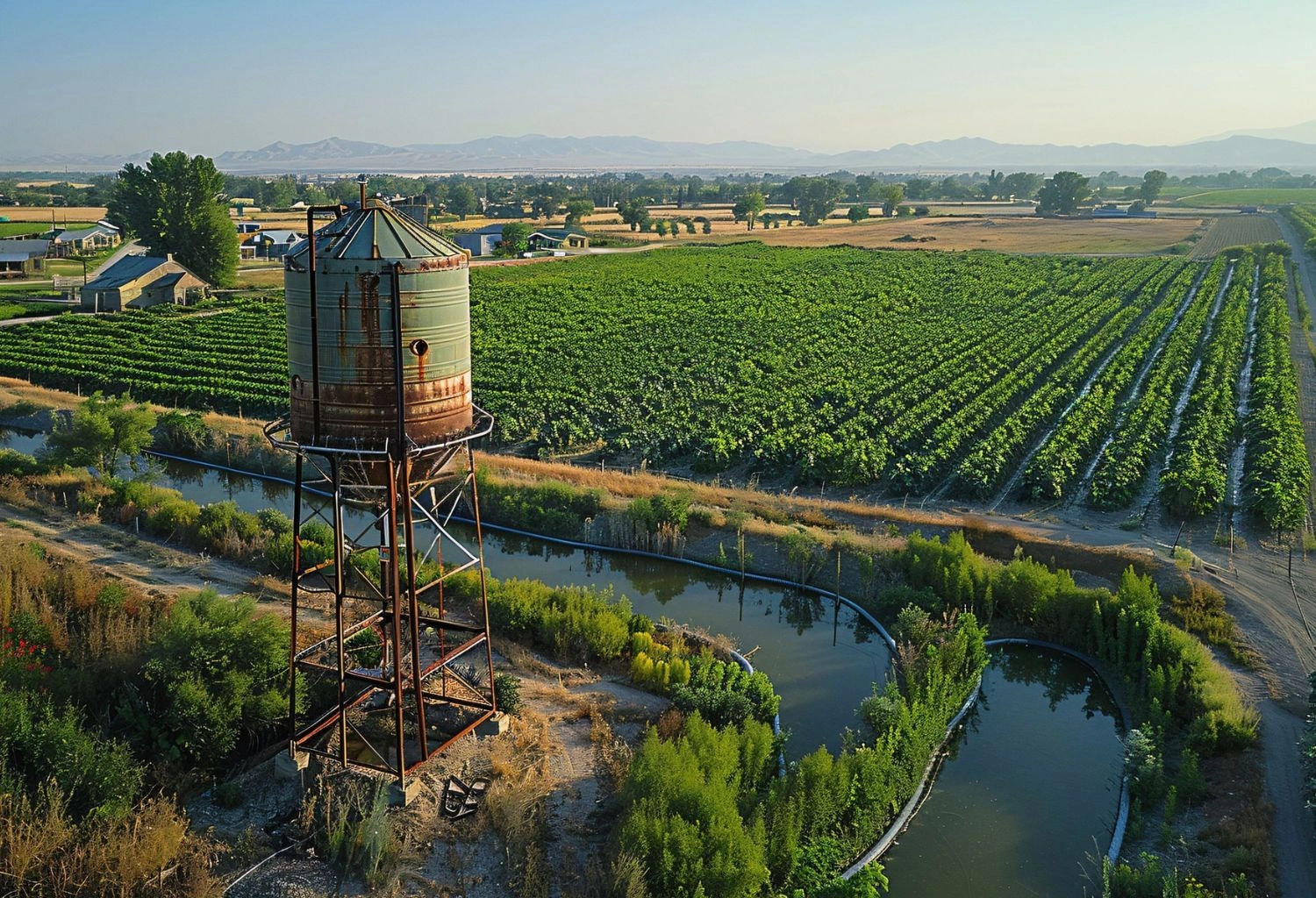WCSP is Pakistan’s top effluent treatment plant supplier, blending advanced technologies like MBBR, electrocoagulation, and AOP with local expertise. Their ISO-certified systems are tailor-made for industries, ensuring legal compliance and environmental safety. With full installation and maintenance services, WCSP guarantees effective, sustainable wastewater treatment solutions that deliver long-term ROI.
A Balance in Blue & Greens
Blue Economy
Green Economy | Green & Blues | Water Care Services
Sustainability and Water Credits
Water Treatment
News&Events
Zoom Meeting
Wastewater Treatment for Agriculture
Water For Masses
Why it’s important to choose the right Effluent Treatment Plant (ETP) supplier?
Selecting a suitable effluent treatment plant (ETP) supplier in Pakistan is not merely purchasing an equipment—it’s about compliance, environmental protection, and long-term sustainability. Chemical waste-producing industrial units, dye effluents, oil, and metal-contaminated water are obliged by law to treat discharge.
Pakistan’s National Environmental Quality Standards (NEQS) and Environmental Protection Agency (EPA) require industries to treat wastewater to a safe standard prior to disposal. Noncompliance may result in fines, plant closures, and permanent environmental damage. Selecting a professional supplier ensures your system meets compliance, is effective, and is designed for your wastewater issues.
What Makes a Great ETP Supplier?
Technical Expertise and Certifications
A world-class supplier such as Water Care Services Pakistan (WCSP) prides itself on globally accepted ISO certifications and a list of successful ETP installations. Employed by WCSP is a team of engineers, technicians, and water quality specialists with a collaborative approach to providing solutions compliant with Pakistan’s environmental regulations. WCSP designs tailored systems based on NEQS discharge requirements and employs technology assessed by performance testing.
Tailored Industry-Specific Solutions
Every industry—textile, pharmaceutical, food processing, chemical, or leather—produces a different kind of effluent. WCSP is aware of this fact and provides tailor-made solutions after conducting thorough site surveys and analysis of effluent. It is not a “one-size-fits-all” policy but a design that is suited to every individual case in solving real-life industrial issues in Pakistan’s working environments.
Dependable Quality and After-Sales Support
A robust ETP supplier does not vanish after installation. WCSP provides comprehensive after-sales support comprising annual maintenance contracts (AMC), periodic check-ups, on-call servicing, and operator training. They also provide on-time system monitoring and performance alerts to ensure maximum operation of the system throughout the year.
Effluent Treatment Technologies Utilized by WCSP
WCSP incorporates a combination of mechanical, biological, and innovative chemical processes for efficient wastewater treatment. This is a summary of the most prevalent technologies used:
Screening & Sedimentation
This is the initial point of defense where coarse solids, gravel, and floating debris are eliminated. It avoids clogging and guards succeeding stages of the system.
Biological Treatment – MBBR and SBR
Biological processes such as MBBR (Moving Bed Biofilm Reactor) and SBR (Sequencing Batch Reactor) exploit bacteria to degrade organic pollutants naturally. MBBR is energy-efficient and has less footprint in sludge generation.
Electrocoagulation
Electrocoagulation employs electric currents to coagulate and eliminate contaminants such as heavy metals, dyes, and emulsified oil. It’s chemical-free, hence minimizing operational cost and the problem of sludge disposal.
Advanced Oxidation Process (AOP)
AOP is best suited for decomposing difficult and non-biodegradable chemicals such as present in the pharmaceutical and pesticide sectors. WCSP combines ozone, hydrogen peroxide, or UV light based on effluent composition.
Tertiary Filtration and Disinfection
The last polishing of water consists of sand and carbon filters to enhance clarity, deodorize, and disinfect water with UV or chlorine, rendering it safe for discharge or reuse.
WCSP’s Effluent Treatment Delivery Process
Step 1 – Site Analysis and Wastewater Testing
WCSP starts with a comprehensive site visit and laboratory testing. This establishes the flow rate, chemical load, and physical nature of the wastewater.
Step 2 – Design and Engineering
Engineers design a tailored solution based on data gathered. This involves choosing media types, pumps, dosing systems, and control panels that provide maximum treatment efficiency.
Step 3 – Fabrication and Installation
All ETP systems are built with corrosion-free material and high-grade pumps and fittings. Civil work, plumbing, wiring, and full mechanical installation at the site are also taken care of by the company.
Step 4 – Commissioning and Staff Training
After installation, the system is commissioned to confirm full operating capacity. WCSP gives extensive training to staff so they know operation, maintenance, and safety procedures.
Step 5 – Maintenance and Support
The service does not end with installation. With AMCs, availability of spare parts, emergency services, and online monitoring, WCSP ensures your ETP runs at its best in its entire lifetime.
Green & Blues
Advantages and Disadvantages of ETP Technologies
Various technologies cater to various requirements. Here’s a glimpse into their pros and cons:
- MBBR: Provides compact size, low energy consumption, and less sludge generation. It does, however, involve significant periodic replacement of biofilm carriers and automation.
- Electrocoagulation: Efficiently treats heavy metals and dyes without chemicals. It requires frequent cleaning and maintenance of electrodes, though.
- AOP: Suitable for the treatment of extremely toxic or complicated wastewater. The drawback is that it has more energy consumption and initial setup cost.
- Activated Sludge: Simple to maintain and economical but requires huge space and generates excess sludge compared to modern technology.
- MBR (Membrane Bioreactor): Provides the purest water quality, reusable, but expensive and needs frequent membrane maintenance.
Technology Comparison (Simple Table)
| Purpose | Best Technology | Note |
|---|---|---|
| Organic Waste Removal | MBBR, Activated Sludge | Compact and cost-effective |
| Chemical-Heavy Effluent | Electrocoagulation, AOP | High efficiency, higher cost |
| Water Reuse (High Quality) | MBR | Excellent output, expensive |
How to Choose WCSP as Your ETP Supplier
In order to guarantee you pick the best supplier for your wastewater treatment system:
✅ Confirm Credentials: Select certified vendors such as WCSP with ISO, NEQS, and EPA certifications.
✅ Consider Experience: WCSP has installed systems in textile, food, pharmaceutical, and chemical industry sectors.
✅ Consider Support: Seek vendors who provide training, AMCs, and real-time monitoring such as WCSP.
✅ Ask for ROI Analysis: WCSP assists customers in calculating return on investment considering water reuse savings, compliance, and minimum penalties.
✅ Conclusion
In selecting the most suitable effluent treatment plant supplier in Pakistan, WCSP is at the forefront with advanced technology, tailored solutions, and support. It’s not merely about compliance, but creating long-term value, safeguarding the environment, and cost-effectiveness. Whatever your objective, whether it’s legal clearance, safe discharge, or recycling water—WCSP provides solutions that deliver.




